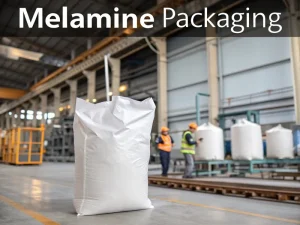
High Pressure Nelamine Use For Melamine Tableware Advantage
Tech Blog High Pressure melamine Use For Melamine Tableware Melamine tableware has become a staple for households, restaurants, and catering services worldwide due to its

Melamine molding compound (MMC) is a thermosetting plastic widely used in the manufacture of high-quality, durable, and aesthetically pleasing products, particularly in tableware (such as melamine tableware), electronic components, and decorative laminates. This compound is highly praised for its hardness, heat resistance, chemical stability, and excellent surface finish.
Understanding the production process of melamine molding compounds is key to evaluating the quality and performance of the final product. This process is a carefully controlled chemical and mechanical operation that converts basic raw materials into powder or granular materials that can be directly molded.
The production of MMC relies on two primary raw materials:
Melamine: a nitrogen-rich organic compound that provides core structure and heat resistance.
Formaldehyde: A simple organic compound used to react with melamine to form resin.
Other essential components include:
Alpha cellulose: used as a filling material to increase volume, improve impact strength, and reduce shrinkage. The quality and purity of cellulose significantly affect the appearance and performance of the final product.
Pigments: Organic or inorganic coloring agents added to achieve the desired color.
Curing agents, stabilizers, and lubricants: chemical additives used to control reaction rates, enhance stability, and ensure smooth demolding.
The production of melamine molding compounds typically involves four main stages:
This is the chemical core of the process, where melamine formaldehyde resin is generated.
Reaction: Under controlled temperature and weakly alkaline conditions, melamine and formaldehyde are mixed in a specific molar ratio (usually excess formaldehyde) in a reaction vessel.
Condensation: The mixture undergoes a condensation reaction. This reaction generates an intermediate product called melamine formaldehyde resin. This resin initially appears as a liquid or thick slurry.
Control: Strictly control the reaction time and temperature to achieve the desired degree of polymerization. This determines the molecular weight of the resin and its flow characteristics during the final molding stage.
Now, liquid resin is combined with other basic components.
Mixing: Pour liquid melamine formaldehyde resin into a high-speed mixer.
Addition: Add alpha cellulose filler to the resin. Stir the mixture thoroughly until the resin is entirely saturated and covers the cellulose fibers.
Coloring and additives: At this stage, pigments and other additives (lubricants, stabilizers) are added and evenly dispersed throughout the mixture.
The wet, dough-like mixture must be dried to prepare for the final molding process.
Drying: Transfer the composite material to a drying oven or specialized dryer. The purpose is to remove excess moisture and volatile substances to achieve precise humidity levels. Careful drying can prevent foaming and ensure proper curing during the molding process.
Grinding/Crushing: After drying, the material will become fragile. Then, it needs to be crushed into small and uniform powder through a crusher or grinder (pulverizer).
The final mechanical step converts the fine powder into a more usable form.
Compaction: Fine powder is typically compacted under pressure and heat (through an extrusion or densification process) to form small, uniform particles or spheres.
The benefits of granulation:
Improving fluidity: particles flow more easily and consistently into the mold cavity, which is crucial for automatic molding machines.
Reduce dust: Particles significantly reduce dust during processing, improving workplace safety and cleanliness.
Higher density: Granulation increases the bulk density of the material, allowing for more efficient storage and transportation.
The final melamine molding compound needs to be adequately packaged to prevent moisture and contamination – exposure to air will gradually degrade, affecting quality:
Packaging materials: Use moisture-proof sealed bags (such as polyethylene bags lined with aluminum foil) or sealed plastic drums. Food contact grade molding materials must be made from FDA-certified packaging materials.
Label annotation: Clearly label batch number, production date, particle size, color, and purpose (such as “Food contact grade tableware molding plastic, batch # 20220501”).
Storage conditions: Store in a cool (20-25°C) and dry (relative humidity <60%) environment. The shelf life is typically 6-12 months; after exceeding this period, the resin will degrade, resulting in a decrease in molding performance.
Caution: Avoid storing molding materials near heat sources (above 30 ℃) or chemicals (such as solvents). High temperatures can accelerate the curing process, and chemicals can contaminate the materials.
Throughout the entire process, we will conduct strict quality control checks:
Resin viscosity: Check in the first stage to ensure the correct degree of polymerization is achieved.
Moisture content: It is crucial in the third stage to prevent defects in the final product.
Flow rate (curing time): The most important test used to determine the speed at which compounds solidify and flow in the mold. Use specialized testing equipment for measurement.
Color consistency: Check according to the primary standard to ensure consistency between batches.
The manufacturing process of melamine molding compound is a precision technology that integrates science and practice. From raw material testing to packaging and storage, each step affects the durability, safety, and formability of molded plastics. This process begins with melamine and formaldehyde, undergoes controlled polymerization, involves precise mixing of cellulose and pigment, is followed by fine drying, and concludes with final granulation.
Through strict quality control, optimizing key parameters such as moisture and particle size, and addressing common issues like premature curing, manufacturers can produce stable and high-quality melamine molding compounds that stand out in a fiercely competitive market. With the increasing demand for durable and sustainable thermosetting materials, melamine molding material manufacturers that focus on craftsmanship excellence will lead the industry’s development.
If you are looking to purchase high-quality melamine molding powder, please do not hesitate to contact us.

Tech Blog High Pressure melamine Use For Melamine Tableware Melamine tableware has become a staple for households, restaurants, and catering services worldwide due to its

Tech Blog Melamine packaging For manufacturers, inaccurate packaging not only fails to meet national standards but also increases labor costs and the risk of product

Tech Blog How to Detect Melamine in Textiles? Melamine powder, a nitrogen-containing heterocyclic compound, is widely used in flame-retardant textiles and plastic products due to

JINGJIANG MELAMINE POWDER
© JINJIANG MELAMINE